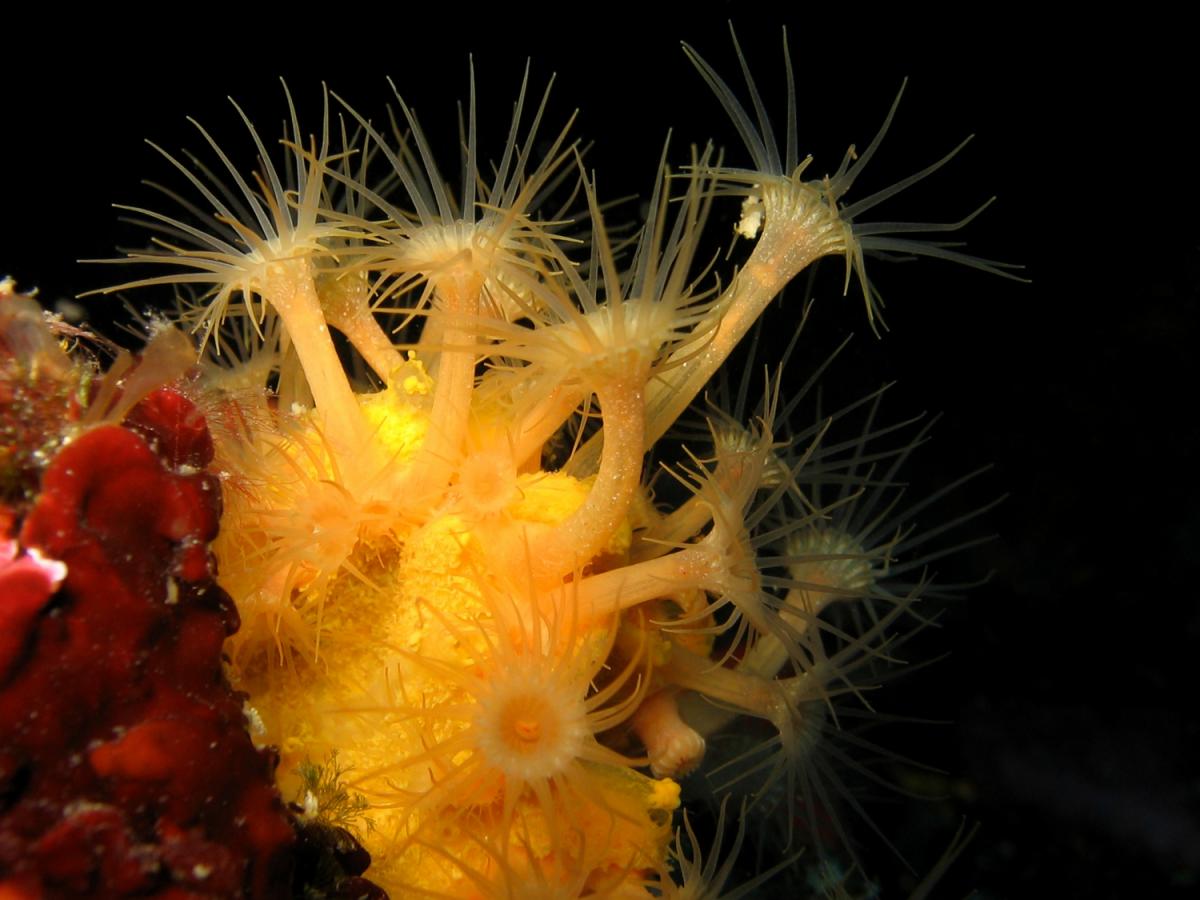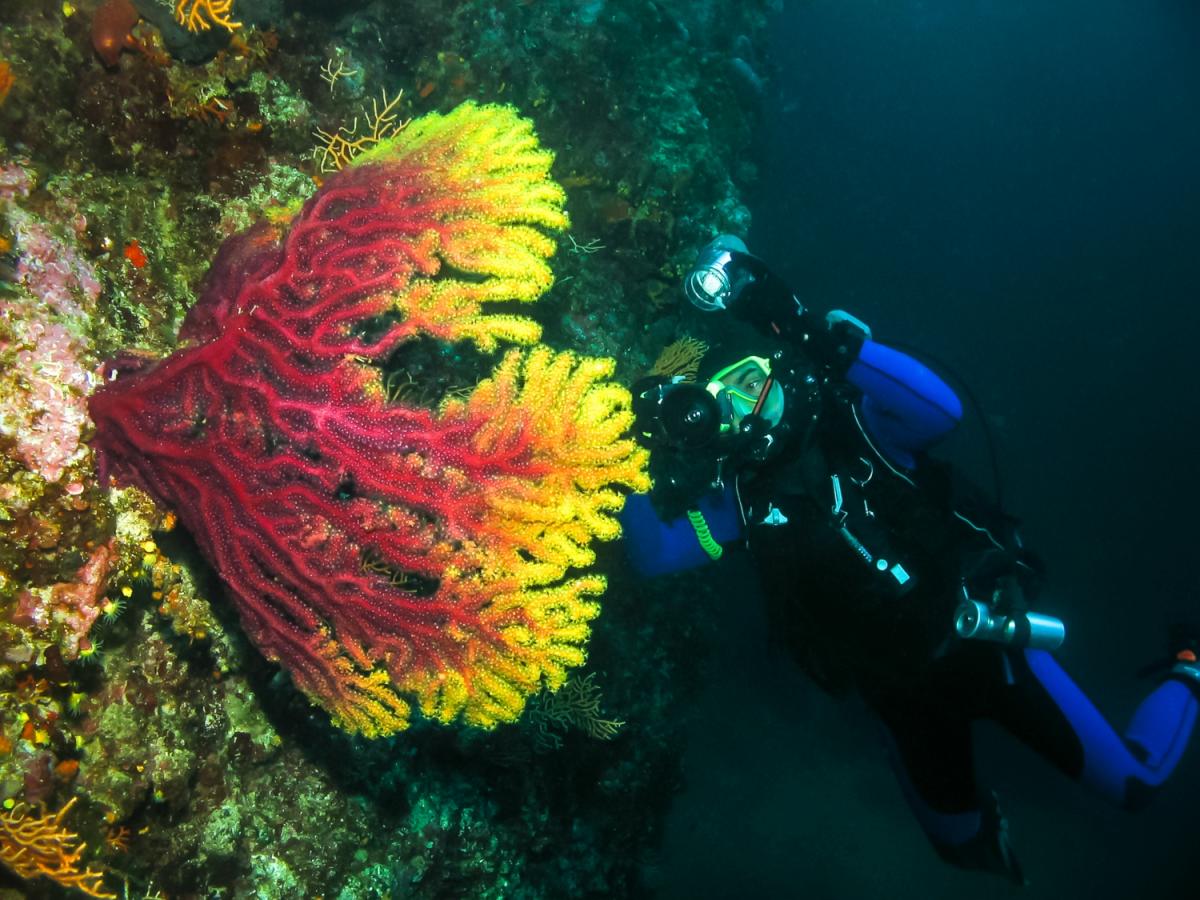IUCN rings alarm bells for corals in the Mediterranean
Over 13% of anthozoan species in the Mediterranean Sea – which include corals and related species – are threatened with extinction, according to the Red List of Anthozoans report published recently by the International Union for Conservation of Nature (IUCN). The report proposes urgent conservation measures, including restrictions on unsustainable fishing practices, to protect these species and the rich biodiversity they harbour.
Anthozoans, meaning “flower-animals”, include around 212 species of hard and soft coral, black coral, sea anemone and gorgonians – a group that includes sea whips and sea fans – native to the Mediterranean Sea. The report also shows that current knowledge of Mediterranean anthozoans is very limited. Of the 142 species assessed, 69 were designated as Data Deficient, meaning that experts were unable to judge how threatened they are because there is not enough information regarding their distribution, population sizes and trends.
The new IUCN report reveals that 17 anthozoan species are threatened with extinction in the region, among them two species only native to the Mediterranean and some with a distribution restricted to the Mediterranean sea.
“Gorgonian and black coral forests constitute one of the most emblematic Mediterranean marine communities in both shallow and deep waters because of their high diversity and complexity. Their conservation is crucial to maintain the biodiversity that they harbour” says Marzia Bo from Universita degli Studi di Genova.
Many corals and other anthozoan species play a vital role as bio-constructors, creating habitats that act as a shelter for numerous other organisms, harbouring great biodiversity.
“Some of the black coral colonies in the Mediterranean Sea are known to live for more than 2,000 years. We need stronger protection measures, and in this report we provide options and recommendations to address the challenges and maintain these species,” says María del Mar Otero from the IUCN Centre for Mediterranean Cooperation and one of the authors of the report.
The bamboo coral (Isidella elongata), with its unique candelabrum shape, is among the longest lived species of gorgonian in the Mediterranean. It is now listed as Critically Endangered, which is the highest extinction risk category on the IUCN Red List of Threatened Species.
The report warns that Mediterranean anthozoan species are suffering the effects of damage from unsustainable fishing techniques and gears, particularly bottom trawling and towed dredges, as well as artisanal and recreational gears targeting species found on the sea floor. Rising sea water temperatures, pollutant runoff into coastal waters, the spread of exotic invasive species and commercial collection of some anthozoans also exert considerable pressure on these species.
The group of Mediterranean experts who conducted the assessment concluded that appropriate habitat conservation measures to improve the resilience of local species and their capacity to recover could improve the conservation status of these valuable species.
The report also recommended urgent conservation measures to safeguard this natural capital in the region by reinforcing national and international legal protection of threatened species, enforcing fishing restrictions, designating tools for reducing species bycatch, as well as improving knowledge of threatened and lesser-known species.
This report is a result of the work developed by the IUCN Centre for Mediterranean Cooperation (IUCN-Med) in collaboration with the IUCN Species Programme. IUCN-Med is assessing the conservation status of selected taxonomic groups in the Mediterranean region. The Red List of Anthozoans is the ninth publication in this series.
This assessment has been made possible thanks to the financial support of the MAVA Foundation and is available here.
For more information: Mar Otero
Overview of the conservation status of Mediterranean anthozoa
Bo, Marzia, Numa, Catherine, Otero, María del Mar
Language: En





